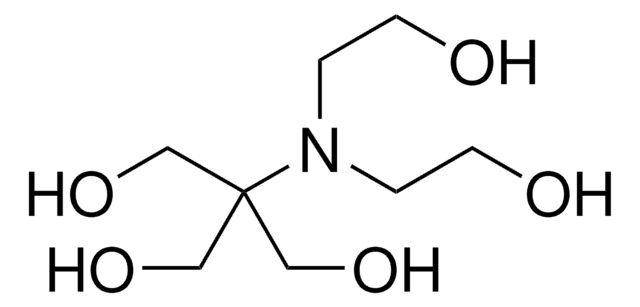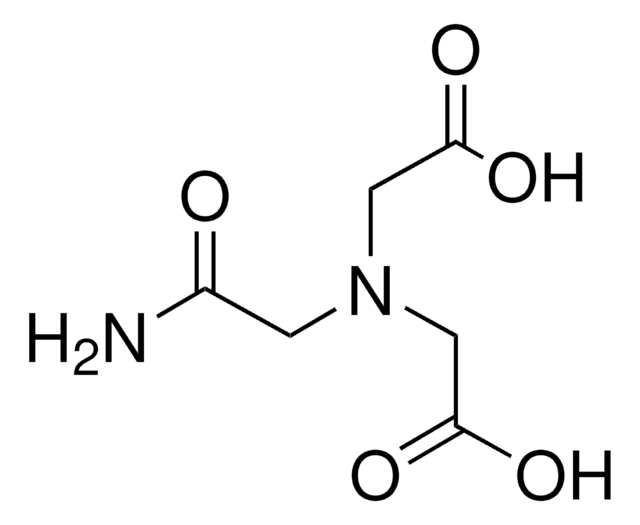A9883
ADA
≥98% (titration)
Sinónimos:
N-(2-Acetamido)iminodiacetic acid, N-(Carbamoylmethyl)iminodiacetic acid
About This Item
Productos recomendados
Nivel de calidad
Ensayo
≥98% (titration)
Formulario
powder
pH
1.5-3.0
intervalo de pH útil
6.0-7.2
pKa (25 °C)
6.6
mp
219 °C (dec.) (lit.)
solubilidad
1 M NaOH: 160 mg/mL, clear, colorless
aplicaciones
diagnostic assay manufacturing
temp. de almacenamiento
room temp
cadena SMILES
NC(=O)CN(CC(O)=O)CC(O)=O
InChI
1S/C6H10N2O5/c7-4(9)1-8(2-5(10)11)3-6(12)13/h1-3H2,(H2,7,9)(H,10,11)(H,12,13)
Clave InChI
QZTKDVCDBIDYMD-UHFFFAOYSA-N
¿Está buscando productos similares? Visita Guía de comparación de productos
Descripción general
Aplicación
Nota de preparación
Palabra de señalización
Warning
Frases de peligro
Consejos de prudencia
Clasificaciones de peligro
Acute Tox. 4 Oral
Código de clase de almacenamiento
13 - Non Combustible Solids
Clase de riesgo para el agua (WGK)
WGK 3
Punto de inflamabilidad (°F)
Not applicable
Punto de inflamabilidad (°C)
Not applicable
Equipo de protección personal
Eyeshields, Gloves, type N95 (US)
Elija entre una de las versiones más recientes:
¿Ya tiene este producto?
Encuentre la documentación para los productos que ha comprado recientemente en la Biblioteca de documentos.
Nuestro equipo de científicos tiene experiencia en todas las áreas de investigación: Ciencias de la vida, Ciencia de los materiales, Síntesis química, Cromatografía, Analítica y muchas otras.
Póngase en contacto con el Servicio técnico






